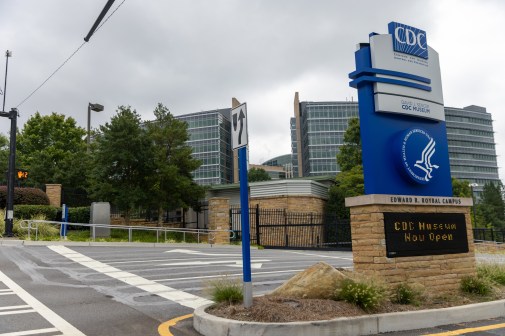Innovating for the next Ebola
As the West African nations recently obliterated by Ebola get closer to becoming disease free, experts are turning their attentions to the innovations developed in response to the outbreak as they prepare for the next big epidemic — even if it’s not Ebola.
Representatives from several of the federal agencies supporting the fight against Ebola, like the U.S. Agency for International Development, the White House’s Office of Science and Technology Policy, and the Centers for Disease Control and Prevention, gathered with frontline epidemiologists and private industry innovators Thursday to discuss what they hope is the tail end of the epidemic — at least for now — and how this maddening virus will strengthen West Africa’s defenses against future outbreaks.
“It’s important we focus on how we can prevent future outbreaks from becoming epidemics,” Amy Pope, the deputy homeland security adviser on the National Security Council and White House Ebola response coordinator, said Thursday at the meeting, hosted by OSTP and USAID. “Much of what we’ve learned on the ground is not only applicable to Ebola but to other infectious diseases.”
U.S. Chief Technology Officer Megan Smith said when Ebola became a full-blown epidemic late last summer, the science and technology community in the federal government convened immediately to brainstorm innovative measures to slow the virus, just like they did at Thursday’s event, the second half of which was a chance for participants to workshop new ideas to battle Ebola.
To Smith, last year’s meeting demonstrated what she believes is at the core of innovation: “people coming together with all kinds of cross-functional skills and their passion and their unique individual talent that makes amazing things happen,” she said.
Out of that innovation came tangible solutions — like new personal protective equipment for caregivers developed in USAID’s Fighting Ebola Grand Challenge, wearable devices that deliver real-time diagnostics, and increased digital connectivity in the affected West African countries — which helped stint Ebola’s movement. But much of that work was done with short-term goals in mind.
“We had very weak digital networks in a lot of places, and Facebook and Inveneo and a bunch of other folks jumped in to that to get us connected in the short term,” Smith said. Now the goal, she said, should be “how can we make that more permanent?”
The goal for many, especially for the federal government under the leadership of President Barack Obama, is to battle Ebola until the number of infected in West Africa reaches zero. That’s a goal that, though some say the fight may rage on for months more, appears more and more feasible.
Nelson Dunbar, research director of the Ministry of Health in Liberia, said it had been more than a dozen days since the last new confirmed case in his country, one of the three Ebola hotspots, in addition to Guinea and Sierra Leone.
But there’s worry that once things return to normal, the global support will retreat and the West African nations will have to prevent a regression on their own.
“This outbreak will end at some point … and a lot of these international organizations will start to divest themselves in these countries,” said Austin Demby, former director of the Lassa Fever Program at CDC and current director of the Department of Health and Human Sevices’ President’s Emergency Plan for AIDS Relief. “So we have to build long-term capacity there.”
Dunbar agreed. “Our concern as Liberians, as a team, is to focus on how well we can prepare ourselves” for new cases, he said.
The reality is that once Ebola is under control, there may be a bigger, badder virus lurking in the shadows. And there are already plenty of other diseases that wreak havoc on the West African region.
While approximately 10,000 West Africans have now died from Ebola, “the year before, 70,000 children died of curable and preventable diseases,” according to Hans Rosling, a renowned epidemiologist and professor of international health at Karolinska Institute in Sweden. But before Ebola struck and threatened to spread outside of Africa, there was “not one head nod,” he said.
But iterating and scaling the progress made in what has been one of the most challenging epidemics in modern time will be key to that next fight, said Jeremy Konyndyk, director of the Office of Foreign Disaster Assistance and the Disaster Assistance Response Teams for USAID.
Konyndyk’s team is used to responding to disasters like earthquakes and typhoons, and therefore they have tested models for response each time they occur.
“A lot of the innovation that’s possible in those areas has already been achieved, because innovation happens when you realize a problem you didn’t know you had before,” he said. “We haven’t had that with Ebola. This put it on a whole different scale.”
“We know this won’t be the last time we see Ebola … we know as well there’s always the threat globally for something much worse,” Konyndyk said. “If something [more contagious] ever emerges, the innovations that we’re coming up with in this response … will be really, really important.”






